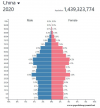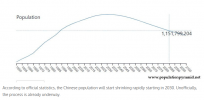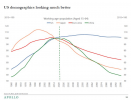Hyvä kirjoitus Taiwanin, Kiinan ja USA:n vahvuuksista ja heikkouksista eskalaatiossa. Sekä spekulointia miltä mahdollinen sota näyttäisi käytännössä sekä mitä tarkoittaisi Kiinan ja USA:n talouksille. Jos kiinnostaa pelkkä sotafantasia, se alkaa kappaleesta 'If war comes'.
Täältä sohvalta katsoen riskit ja sodan hinta ovat Kiinalle huomattavasti hyötyjä suuremmat. Mutta toisaalta, jos motiivina on kansallistunteellinen
One China, ei silloin Pekingissä ehkä ajatella lyhyen aikavälin hyötyä.
Lukusuositus @
WSJ. Alla kopioituna koko teksti maksumuurin varalta.
The Coming War Over Taiwan
With its global power at a peak and domestic problems mounting, China is likelier than ever before to make good on its threats.
The U.S. is running out of time to prevent a cataclysmic war in the Western Pacific. While the world has been focused on Vladimir Putin’s aggression in Ukraine, Xi Jinping appears to be preparing for an even more consequential onslaught against Taiwan. Mr. Xi’s China is fueled by a dangerous mix of strength and weakness: Faced with profound economic, demographic and strategic problems, it will be tempted to use its burgeoning military power to transform the existing order while it still has the opportunity.
This peaking-power syndrome—the tendency for rising states to become more aggressive as they become more fearful of impending decline—has caused some of the bloodiest wars in history. Unless the U.S. and its allies act quickly, it could trigger a conflict that would make the war in Ukraine look minor by comparison.
From ancient times to the present, once-rising powers have taken up arms when their fortunes faded, their enemies multiplied, and they felt they had to lunge for glory or lose their chance forever.
No one can say we didn’t see it coming. Just this week, House Speaker Nancy Pelosi paid a high-profile visit to Taiwan, and Beijing responded by encircling the island with several days of live-fire military exercises. For the past decade, China’s factories have churned out ammunition and put warships to sea faster than any country since World War II. The People’s Liberation Army (PLA) regularly practices missile strikes on mock-ups of Taiwanese ports and U.S. aircraft carriers, and PLA vessels and aircraft menace Taiwan’s territorial waters and airspace several times a week. The regime has issued bloodcurdling threats toward the island and countries that might come to its aid. “Those who play with fire will perish by it,” Mr. Xi told President Joe Biden last week. Senior U.S. officials warn that China might attack Taiwan in the next half-decade, possibly even in the next 18 months.

House Speaker Nancy Pelosi poses for photographs with Taiwan's President Tsai Ing-wen, Taipei, Taiwan, Aug. 3
Beijing’s belligerence might look like the mark of an ascendant superpower. But the reality is more complex. China isn’t so much a rising state as a peaking power, one that has acquired fearsome coercive capabilities—and soaring power ambitions—but now faces worsening challenges at home and abroad.
Such a combination of aspiration and anxiety can be explosive. From ancient times to the present, once-rising powers have taken up arms when their fortunes faded, their enemies multiplied, and they felt they had to lunge for glory or lose their chance forever. Fast-growing countries have responded to economic slumps with reckless expansion. Revisionist states that find themselves cornered by rivals often use force to break the ring. The ghastliest wars of the last century were started not by rising, optimistic powers but by countries—such as Germany in 1914 or Japan in 1941—that had crested and begun to decline. Now China is following this arc—an exhilarating rise followed by the prospect of a hard fall.
Thanks to decades of rapid growth, China boasts the world’s largest economy (measured by purchasing power parity), navy by number of ships and conventional missile force. Chinese investments span the globe, and Beijing is pushing for primacy in crucial technologies. Chinese leaders are dreaming some very big dreams: They want to absorb Taiwan, make the Western Pacific a Chinese lake and carve out a vast economic empire across the global south—all part of the “national rejuvenation” that will return China to its former place as the most powerful country on Earth. In the West, pundits breathlessly warn that Beijing will soon be number one.
Look closer, however, and China’s future doesn’t seem so bright. Once-torrid growth had already slowed dramatically before Covid-19 compelled the government to lock down major cities indefinitely. Water, farmland and energy resources are becoming scarce. Thanks to the legacy of its one-child policy, China is approaching demographic catastrophe: It will lose 70 million working-age individuals over the next decade while gaining 120 million senior citizens. And whereas the outside world once aided China’s rise, now advanced democracies are kicking Chinese firms out of their financial markets, strangling China’s tech giant Huawei, boosting military spending and creating multilateral coalitions to check Beijing’s expansion. Mr. Xi may tout the rise of the East and the decline of the West, but behind the scenes, Chinese government reports paint pessimistic pictures of slowing growth at home and surging anti-Chinese sentiment abroad.
In the long term, China’s woes will make it less competitive. It probably can’t outpace America in a superpower marathon, let alone America plus its allies. But in the near-term, we should expect a more dangerous China—one that gambles big to reshape the balance of power before its window closes.
The Taiwanese military conducts exercises, July 27, New Taipei City, Taiwan.
Taiwan is the most likely target of this anxious expansion. Reclaiming Taiwan would eliminate a government whose very existence disproves the Chinese Communist Party’s claims that Chinese culture is incompatible with democracy. It would give Beijing a commanding position in the Western Pacific and terrify U.S. allies like the Philippines and Japan. Not least, it would cement Xi Jinping’s legacy as a leader on par with Mao Zedong.
For decades, a confident, rising China was content not to force the issue, seeking to gradually lure Taiwan back through peaceful means. Today, though, the prospects for peaceful unification are fading fast. Most Taiwanese don’t want to be ruled by a genocidal dictatorship. Popular support for unification has nearly disappeared while support for incremental moves toward independence has doubled since 2018.
But between now and the end of the decade, China has a tantalizing opportunity to secure unification by force. Mr. Xi’s reforms of the PLA—meant, among other things, to make it capable of taking Taiwan—are nearly complete. China is rapidly deploying missiles, aircraft, warships and rocket launchers that can pummel Taiwan; it is assiduously rehearsing large-scale amphibious assaults.
Mr. Xi has repeatedly said that the task of ‘liberating’ Taiwan cannot be passed down for generations.
Meanwhile, U.S. military power is about to dip. The mid-2020s will witness the mass retirement of aging U.S. cruisers, guided-missile submarines and long-range bombers, leaving the U.S. military with hundreds fewer missile launchers—the key metric of modern naval firepower—floating and flying around East Asia. While Washington, Tokyo and Taipei are all undertaking much-needed defense programs focused on denying Chinese hegemony in Asia, those efforts won’t bear fruit until the early 2030s. Mr. Xi has repeatedly said that the task of “liberating” Taiwan cannot be passed down from generation to generation. In the mid- and late 2020s, he’ll have his best chance to accomplish that mission.
If war comes, it is likely to feature the massive application of force. Beijing could theoretically try to coerce Taiwan into unification with a more limited operation, such as an air-sea blockade or the seizure of Taiwan’s small offshore islands. Yet none of these options can guarantee Taiwanese capitulation, and all of them would give Taipei, Washington and other democracies time to mount a punishing response. To achieve its goals, China has to go big and brutal from the start.
Its war plan could well involve a surprise missile and air attack against Taiwan and U.S. military bases in the Pacific, strikes on the satellite communications that underpin the American way of war and a wave of sabotage and assassinations within Taiwan—all as prelude to a massive airborne and amphibious invasion.
Both U.S. and Taiwanese forces could be crippled as the PLA rushes toward its objectives. Even if America avoids rapid defeat, the nightmare scenario currently envisaged in Ukraine—direct clashes between the U.S. and a nuclear-armed great power—would be the reality at the outset. A Sino-American war could escalate rapidly because it will involve technologies that work best when used first, including cyberattacks, hypersonic missiles and electronic warfare. The side that is losing might decide to use low-yield nuclear weapons to turn the tide or force its opponent into submission.
The economic fallout would also be horrendous. Vital waterways would become shooting galleries; the world might find itself cut off from the more than 90% of cutting-edge semiconductors that are manufactured in Taiwan. According to the RAND Corporation, one year of fighting would reduce America’s gross domestic product by 5% to 10% and China’s by 25% to 35%. A global depression would be all but guaranteed.
American officials aren’t blind to the problem, but Washington—thanks to a mixture of inertia, distraction and simple denial—isn’t racing to address it. President Biden has pledged, albeit ambiguously, to defend Taiwan from Chinese attack. Speaker Pelosi has joined a growing list of lawmakers to visit Taiwan. The Pentagon calls China its “pacing challenge.” Yet such symbolic gestures will amount to cheap and provocative talk if not backed by a strong and resilient defense—something the U.S. and Taiwan currently lack.
American forces in the Pacific are still concentrated at large bases, principally on Guam and Okinawa, that are highly vulnerable to missile attacks. The U.S. defense budget has loads of money for future capabilities that might materialize in the 2030s but won’t help win a war over Taiwan in this decade. Washington has, rightly, committed tens of billions of dollars in aid to Ukraine yet struggles to find a fraction of that to fund the Pacific Deterrence Initiative, meant to make U.S. forces in the region more resilient and powerful. The fact that China faces an ugly long-term trajectory won’t be much consolation if Beijing nonetheless thrashes Washington and Taipei in the coming fight for dominance of the Western Pacific.
But the situation isn’t hopeless. Amphibious assaults are devilishly difficult, and a full-on invasion of Taiwan would be one of the largest amphibious assaults in history. It would require the PLA to surge hundreds of thousands of troops across the turbulent Taiwan Strait and to seize an island whose geography—mountains, dense jungles, crowded urban environments—is a defender’s dream. A smart, committed defender could turn this operation into a bloody nightmare for invading forces. And doing so doesn’t require defying the laws of physics; it just requires moving—now—to make an invasion look all-too-daunting for even a risk-prone peaking power.
First, the Pentagon can turn the Taiwan Strait into a deathtrap for attacking forces by stocking up on tools that are ready or nearly ready today. This means positioning hordes of missile launchers, armed drones, electronic jammers and sensors at sea and on allied territory near the strait. Instead of waiting for a Chinese assault to start and then surging missile-magnet aircraft carriers into the region, the Pentagon could use what is, in essence, a high-tech minefield to decimate China’s invasion forces and cut their communications links. These diffuse networks of munitions and jammers would be difficult for China to eliminate without starting a regionwide war. They could be installed on virtually anything that floats or flies, including cargo ships, barges and aircraft.
The U.S. also needs to ensure that its military doesn’t have a glass jaw. To prevent China from wrecking forward-stationed American forces at the start of a conflict, the U.S. must scatter those forces across dozens of small operating sites in East Asia. The few big bases that remain must be outfitted with hardened shelters, robust ballistic missile defenses and fake targets to absorb Chinese missiles. Hanging tough also requires dramatically ramping up production of key munitions, so that America has adequate stockpiles and active production lines when the shooting starts. In short, Washington must deprive Beijing of any hope of landing a knockout blow—and thereby confront it with the prospect of a long, grueling war that could threaten the CCP’s hold on power at home.
A Taiwanese pilot participates in an Air Force drill in Chiayi, Taiwan, Jan 5.
Another priority is for Washington to help Taiwan help itself. Taipei has smart plans to stock up on mobile missile launchers, mines and radars; harden its communications infrastructure; enlarge its army and ground-force reserves; and otherwise prepare to inflict sky-high costs on an aggressor. But Taipei isn’t implementing these plans fast enough. If Taiwan doesn’t pick up the pace, there is nothing the U.S. can do to save it. If Taiwan redoubles its efforts, however, then America should provide money, hardware and expertise to make the island a tougher target.
The U.S. can help by donating ammunition and sensors, subsidizing Taiwanese procurement of missile launchers and mine layers, matching Taiwanese investments in vital military infrastructure and expanding joint training on crucial defense missions. American special operations forces can help Taiwan prepare for a lethal insurgency against Chinese occupiers, the threat of which may help deter an invasion in the first place. Just as important, Washington can undertake more complex exercises with Taiwan’s military—and quietly station larger contingents of trainers and special operations forces on the island—to ensure that the two countries can act as a real alliance if a conflict ignites.
The U.S. also needs to exploit the enemy’s weaknesses. Because the PLA hasn’t fought a major war since invading Vietnam in 1979, it hasn’t tested its modern command-and-control processes under fire. By developing the ability—through cyberattacks and related means—to inject confusion into military communications networks, the Pentagon can make Chinese officials wonder how glitchy their forces will be in combat. And by rehearsing a distant blockade of Chinese energy imports, America can threaten to turn any protracted conflict into an economic disaster for Beijing.
Finally, the U.S. must make China realize that a Taiwan war could go big as well as long. The more friends America can bring into the fight, the less appetizing that fight will look to Beijing.
The PLA may talk big about crushing Japan if Tokyo helps Washington in a crisis, but it can’t relish the prospect of fighting a global superpower and its mightiest regional ally. The Indian and Australian navies could help Washington choke off Beijing’s oil imports as they transit the Malacca Strait. Key European powers—especially the United Kingdom and France—can contribute submarines or surface combatants; more important, they can impose painful technological and economic sanctions. Sanctioning China obviously would be more difficult than sanctioning Russia—which is why America and its allies need to plan these punishments now, before a crisis starts.
If Washington can credibly promise to turn a fight over Taiwan into a showdown between China and the world’s most advanced democracies, that is a strategic price even Xi Jinping might not want to pay. Indeed, the best way to avoid a looming war in Asia is to make clear that Beijing cannot win at anything like an acceptable cost.
The crisis over Speaker Pelosi’s visit is just the beginning. The U.S. is entering the most crucial phase of its rivalry with China, when the risk of war is highest and decisions made, or not made, will reverberate for decades. America can win a protracted competition against a formidable but faltering China, but only if it braces now for the very real possibility of a dramatic attack on Taiwan.
Mr. Brands is the Henry Kissinger Distinguished Professor at the Johns Hopkins School of Advanced International Studies and a senior fellow at the American Enterprise Institute. Mr. Beckley is associate professor of political science at Tufts University and a nonresident senior fellow at the American Enterprise Institute. This essay is adapted from their new book, “Danger Zone: The Coming Conflict with China,” which will be published by W.W. Norton on Aug. 16.










